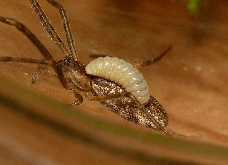There’s no point denying it, at one point or another, we’ve all been guilty of being ‘hangry’. Whether you’re a frequent culprit or just an occasional offender, getting angry when hungry is a common crime in many households, and one that can result in arguments, ‘fallings out’ and even a night spent sleeping on the couch. But is it really our fault or is there a more biological reason to blame? An increasing body of research suggests our blood glucose may be the real culprit.
 The glucose we obtain from our diet is a key source of energy, required for our bodies to function and delivered to all of our cells via our blood. Out of all the organs of the body, our brain is the most energy-consuming, using around 20% of the energy our bodies produce. It also relies almost completely on glucose as its energy source, making an efficient supply of this sugar essential to maintaining proper brain function. This is particularly true for higher-order brain processes such as self-control, which require relatively high levels of energy to carry out, even for the brain. Since self-control allows us to resist such impulsive urges as out-of-control eating or aggressive outbursts, if our brain does not have sufficient energy to perform this process, our ability to stem these unwanted impulses can suffer.
The glucose we obtain from our diet is a key source of energy, required for our bodies to function and delivered to all of our cells via our blood. Out of all the organs of the body, our brain is the most energy-consuming, using around 20% of the energy our bodies produce. It also relies almost completely on glucose as its energy source, making an efficient supply of this sugar essential to maintaining proper brain function. This is particularly true for higher-order brain processes such as self-control, which require relatively high levels of energy to carry out, even for the brain. Since self-control allows us to resist such impulsive urges as out-of-control eating or aggressive outbursts, if our brain does not have sufficient energy to perform this process, our ability to stem these unwanted impulses can suffer.
Low levels of glucose in our blood can also result in an increase in certain chemicals in our body, believed to be linked to aggression and stress. Cortisol, for instance, colloquially named the ‘stress hormone’, has been shown to increase in individuals when they restrict their caloric (and therefore glucose) intake. Neuropeptide Y concentrations have also been shown to be higher in individuals with conditions associated with impulsive aggression when compared to healthy volunteers.
Given such evidence, it therefore makes sense that low levels of blood glucose, like those experienced when we are hungry, could plausibly lead us to become more aggressive. The association between blood glucose and level of aggression has been observed in multiple studies, including Ralph Bolton’s 1970s research of the Quolla Indians. These Peruvian highlanders are well-known for their high rates of unpremeditated murder and seemingly irrational acts of violence. Having observed both this behaviour and a strong sugar craving among the Quolla Indians, Bolton decided to investigate the possible link between hunger and aggression. In agreement with his hypothesis, Bolton found that the Quolla Indians commonly experienced low blood glucose levels, and that those with the lowest levels tended to be the most aggressive.
 In another, more recent study, similar findings were observed in college students who took part in a competitive task. Participants were randomly assigned to consume either a glucose beverage or placebo drink containing a sugar substitute. Following this, participants then competed against an opponent in a reaction time task, which has been shown previously to provide a measure of aggression. Before beginning the task, the students could set the intensity of noise their partner would be blasted with if they lost. As predicted, participants who drank the glucose drink behaved less aggressively towards their partner, choosing lower noise intensities, compared with those who had consumed a sugar substitute. This suggested that hunger-related aggression, or ‘hangriness’, could be ameliorated by boosting one’s glucose levels.
In another, more recent study, similar findings were observed in college students who took part in a competitive task. Participants were randomly assigned to consume either a glucose beverage or placebo drink containing a sugar substitute. Following this, participants then competed against an opponent in a reaction time task, which has been shown previously to provide a measure of aggression. Before beginning the task, the students could set the intensity of noise their partner would be blasted with if they lost. As predicted, participants who drank the glucose drink behaved less aggressively towards their partner, choosing lower noise intensities, compared with those who had consumed a sugar substitute. This suggested that hunger-related aggression, or ‘hangriness’, could be ameliorated by boosting one’s glucose levels.
One notable (though some may argue rather dark) study into the ‘hangry’ condition investigated the relationship between blood glucose and aggressiveness in married couples. As well as pitting spouses against each other in a similar reaction time task to the one described above, participants were also given a voodoo doll of their partner and told to stick pins in the doll each evening, depending on how angry they were at their partner. (Warning, do not try this at home). As with previous studies, lower levels of blood glucose resulted in participants blasting their spouses with higher noise intensities and sticking more pins in the voodoo dolls, suggesting greater levels of anger and aggression.
 While these studies do not necessarily ascertain causality, the relationship between low blood glucose and the tendency to become aggressive makes biological sense, since glucose is the main energy source our brains need to control such negative impulses. As observed in studies and experienced by many of us, ‘hangry’-related crimes can also be easily avoided by supplying the potential offender with food, further supporting the role of glucose in hunger-related anger. So next time ‘hangriness’ threatens to ruin the harmony in your household, fill your mouth with food rather than foul language, and save yourself a night banished to the couch.
While these studies do not necessarily ascertain causality, the relationship between low blood glucose and the tendency to become aggressive makes biological sense, since glucose is the main energy source our brains need to control such negative impulses. As observed in studies and experienced by many of us, ‘hangry’-related crimes can also be easily avoided by supplying the potential offender with food, further supporting the role of glucose in hunger-related anger. So next time ‘hangriness’ threatens to ruin the harmony in your household, fill your mouth with food rather than foul language, and save yourself a night banished to the couch.
Post by: Megan Freeman
Save
Save
 Pregnancy, a beautiful time in any woman’s life when she witnesses her child growing inside her, feels her baby kick for the first time, and spends a great deal time vomiting into her toilet. Rather
Pregnancy, a beautiful time in any woman’s life when she witnesses her child growing inside her, feels her baby kick for the first time, and spends a great deal time vomiting into her toilet. Rather  accordingly. This would lead to a reduction in their desire to have sexual intercourse, instead providing more protection and an increased food supply to the expectant mother.
accordingly. This would lead to a reduction in their desire to have sexual intercourse, instead providing more protection and an increased food supply to the expectant mother. The final and most widely favoured theory for the function of NVP is the
The final and most widely favoured theory for the function of NVP is the  The first of the symbioses involves relationships between two different species which benefit both organisms. Mutualistic symbiosis can involve organisms of all shapes and sizes from
The first of the symbioses involves relationships between two different species which benefit both organisms. Mutualistic symbiosis can involve organisms of all shapes and sizes from  In contrast to mutualistic symbiosis, the interaction between two organisms may be less savoury in nature. Parasitic symbiosis describes a relationship between organisms where the
In contrast to mutualistic symbiosis, the interaction between two organisms may be less savoury in nature. Parasitic symbiosis describes a relationship between organisms where the  An even more detrimental relationship exists between the
An even more detrimental relationship exists between the 
 Despite evidence of the role BAT plays in controlling body weight in experimental rodent models, BAT was originally believed to be absent in adult humans. More recently, however, the use of
Despite evidence of the role BAT plays in controlling body weight in experimental rodent models, BAT was originally believed to be absent in adult humans. More recently, however, the use of  A second potential method of stimulating BAT with the aim to treat obesity or type II diabetes is via the SNS, specifically through
A second potential method of stimulating BAT with the aim to treat obesity or type II diabetes is via the SNS, specifically through  Bioluminescence can occur in a broad range of organisms, from bacteria to fish (with the exception of higher vertebrates, e.g. reptiles and mammals), and is found across a variety of land and, more commonly, marine environments. In fact, around
Bioluminescence can occur in a broad range of organisms, from bacteria to fish (with the exception of higher vertebrates, e.g. reptiles and mammals), and is found across a variety of land and, more commonly, marine environments. In fact, around  In contrast to hiding from prey, as with the dragonfish, bioluminescence can also be used to attract prey. Deep in the Te Ana-au caves of New Zealand,
In contrast to hiding from prey, as with the dragonfish, bioluminescence can also be used to attract prey. Deep in the Te Ana-au caves of New Zealand,  Today, warfarin is the main blood thinner (anticoagulant) used in the treatment of blood clotting disorders, heart attacks and strokes. However, its story began on the prairies of North America and Canada during
Today, warfarin is the main blood thinner (anticoagulant) used in the treatment of blood clotting disorders, heart attacks and strokes. However, its story began on the prairies of North America and Canada during  No article on serendipity in drug discovery would be complete without at least mentioning the
No article on serendipity in drug discovery would be complete without at least mentioning the  However, while today the value of penicillin is well recognised, there was
However, while today the value of penicillin is well recognised, there was 









